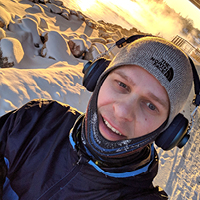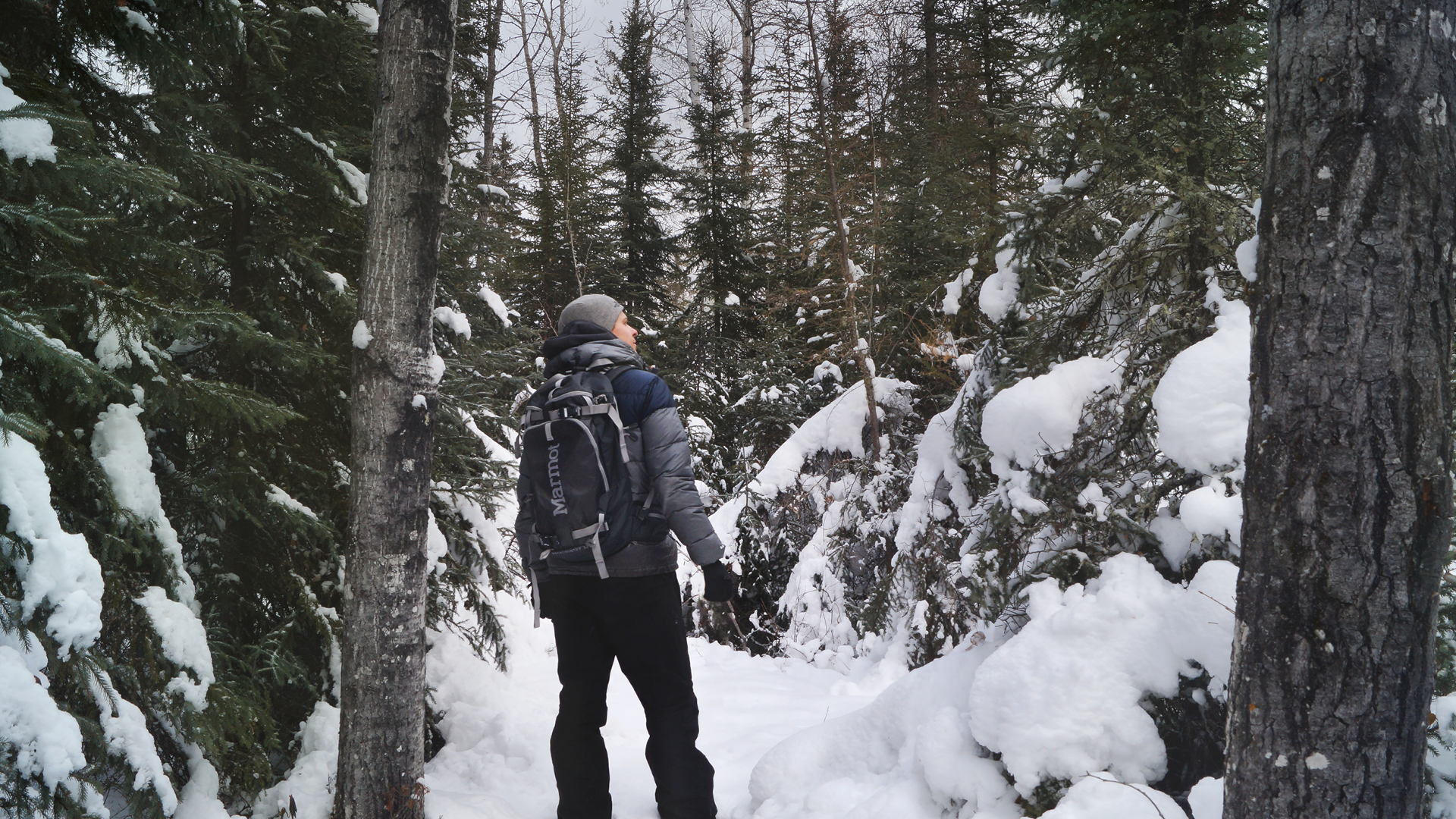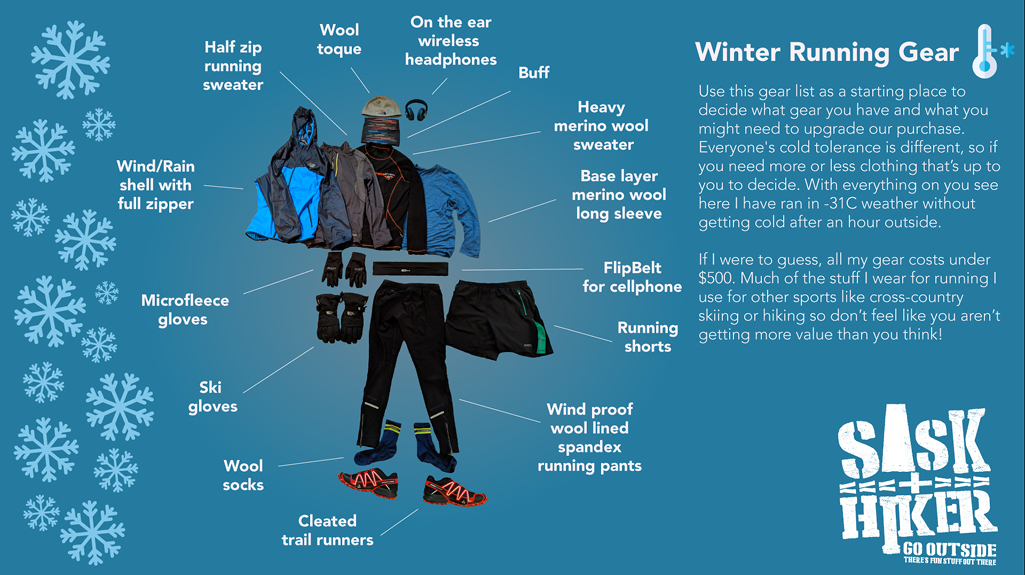How to Dress for Winter with The SaskHiker
Often when I tell people that I hike, run, bike or ski in the winter they think I’m crazy. Being active outside in the winter is a beautiful and rewarding experience.
There is something amazing about walking, hiking, biking or running through fresh snow as the sun sets. The experience just melts away the stress of the world.
Exercise is incredibly important for my mental health and my ability to ward off seasonal depression. I know I am not alone in this. Even getting out for a walk once a week in winter can really change my mood.
My goal is to share what I have learned about dressing properly for outdoor winter fun. I’ll explain the type of gear I invested in to make outdoor activity a cozy breeze.
So far the coldest temperature I have tested my gear in is -45 C. Even in these temperatures I still work up a sweat. You’ll be amazed by how warm you feel when you get your heart rate up. Here are the basics:
It’s all about the layers
1. Ditch your cotton. Wear a wool base layer.
2. Dress in layers. Start with one less layer than you think, you will be surprised how quickly you heat up once you start moving.
3. Make sure one of those layers blocks the wind.
4. Don't get wet, especially from your sweat.
In the beginning, it’s best to start with more layers and then figure out what you can shed the next time. Keep notes about what you wore and what the weather was like each day, to help you make decisions.
What’s in a layer?
To help you decide what gear you need, here is a snapshot of the gear I use and some additional tips.
Use this gear list as a starting place to decide what gear you have and what you might need to upgrade or purchase. Everyone’s cold tolerance is different. I ran in -31 C weather for an hour, with everything you see here, without getting cold.
I wear all of my layers when it’s -18 C or colder. When the temperature is above -18 C I ditch my black wool sweater. Everyone will have temperature limits so do what makes you comfortable.
Keep your hands toasty warm
Once the temperature rises to about -12 C, I leave behind my ski gloves and use my microfleece gloves. Even when it is -20 C or colder there will be times that I take my ski gloves off for a bit to cool down. You’ll want to make sure your hands have the chance to stay warm.
If your hands get cold, it’s nearly impossible to warm them up again. For example, I thought I could double layer my microfleece gloves on a -17 C day and that would be enough. By the time I got back my hands were so frozen, I could barely open the door. I learned a lesson that day.
Don’t forget your pants
You will notice that my legs only have one layer. However, if your legs do get cold, double up with a pair of wool long johns. A pair of splash or rain paints can help. Ski pants are often much too warm when you’re working hard. Avoid cotton fabric – it will only make you colder once you start sweating!
The pants I use are designed specifically for winter running so they’re stretchy and warm. If you don’t have a pair, you can get away with shell pants over long johns.
Heat builds quickly
If you run, you should always be sweaty at the end of your run, but you shouldn't be freezing cold. Aim to be just as hot as if you ran on a nice summer evening.
A good rule of thumb is to start your run feeling a little bit cold. You shouldn't be so cold that you are shivering uncontrollably. A small chill down your spine is the right starting temperature. You will quickly build up enough heat under your layers to be the perfect temperature after your first kilometre.
Make sure you have layers with zippers so you can open them up if you need to cool off.
Block the wind
I recommend getting a shell layer that blocks the wind. It really improved how I felt on windy days.
I also recommend getting a FlipBelt for your phone and wearing it under a layer of clothing. Not only is it much more comfortable to run with, it will also keep your phone from freezing and getting wrecked.
Have the right shoes
The best piece of gear that I invested in was shoes with cleats built directly in. I found ice cleats that attach to your shoes to be not that helpful. Frankly, they hurt my feet. Visit your local outdoor gear shop. They’ll help you get the right pair of winter running or hiking shoes to fit your foot.
- Regina: Fresh Air Experience, Prairie Summit Shop, Western Cycle, Sunshine and Ski
- Saskatoon: Eb’s Source for Adventure, Outter Limits, Escape Sports, Prairie Summit Shop
- Prince Albert: Fresh Air Experience
Stay safe
If you plan to be outside in a less populated place, make sure you let someone know where you’re going and for how long. Things happen, and having someone know where you are makes all the difference.
Buy clothing with built-in reflectors. It’s a great idea to wear a light, too, if you’re out in the dusk or dark. Drivers aren't expecting people to be out in the winter, so they won't be looking for you. Be careful on crosswalks – people can't stop as quickly as they do in the summer!
On-ear headphones for music and podcasts
I recommend buying wireless on-ear headphones. They’re much more comfortable than earbuds. This is definitely a luxury item, but one I am glad I invested in.
Now you can find the gear that works for you at different temperatures. What works for me might not work for you, but I hope this gives you a starting point.
All of my gear cost less than $500. Much of the stuff I wear works for multiple activities, like cross-country skiing, hiking and biking.
By pushing yourself outside you will quickly realize that winter isn't a lion. It's just a little fluffy kitten.
Go outside. There's fun stuff out there.
Now all you need is a trail:
Where is your favourite winter experience in Saskatchewan? Share your photos and stories with #ExploreSask on Facebook and Instagram.

Jay, an avid year-round outdoorsman and hiker, is passionate about exploring Saskatchewan in the winter with hiking, biking, trail running and cross-country skiing. He’s always looking for the next adventure.
Jay’s blog site, SaskHiker.com, is dedicated to sharing information about Saskatchewan hiking trails, as well as undiscovered gems to explore. You can also find him on Facebook and Instagram @saskhiker

